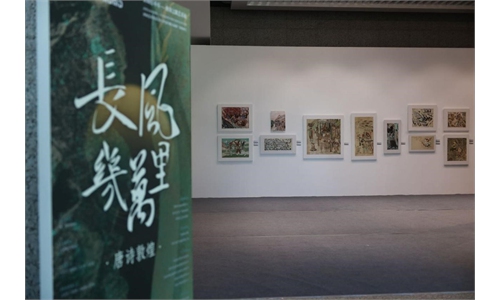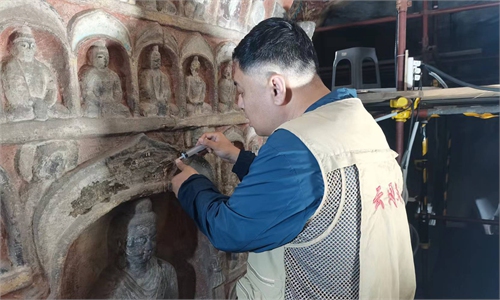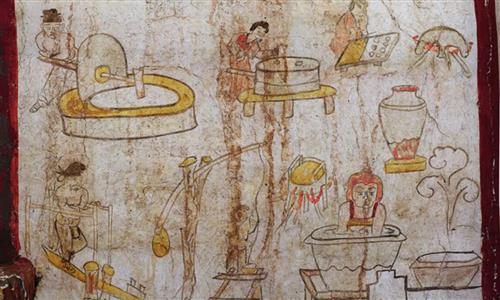ARTS / CULTURE & LEISURE
New study reveals evidence St. Mark’s Lion of Venice may have Chinese origin
Study gets closer to unveiling secret of St. Mark’s Lion
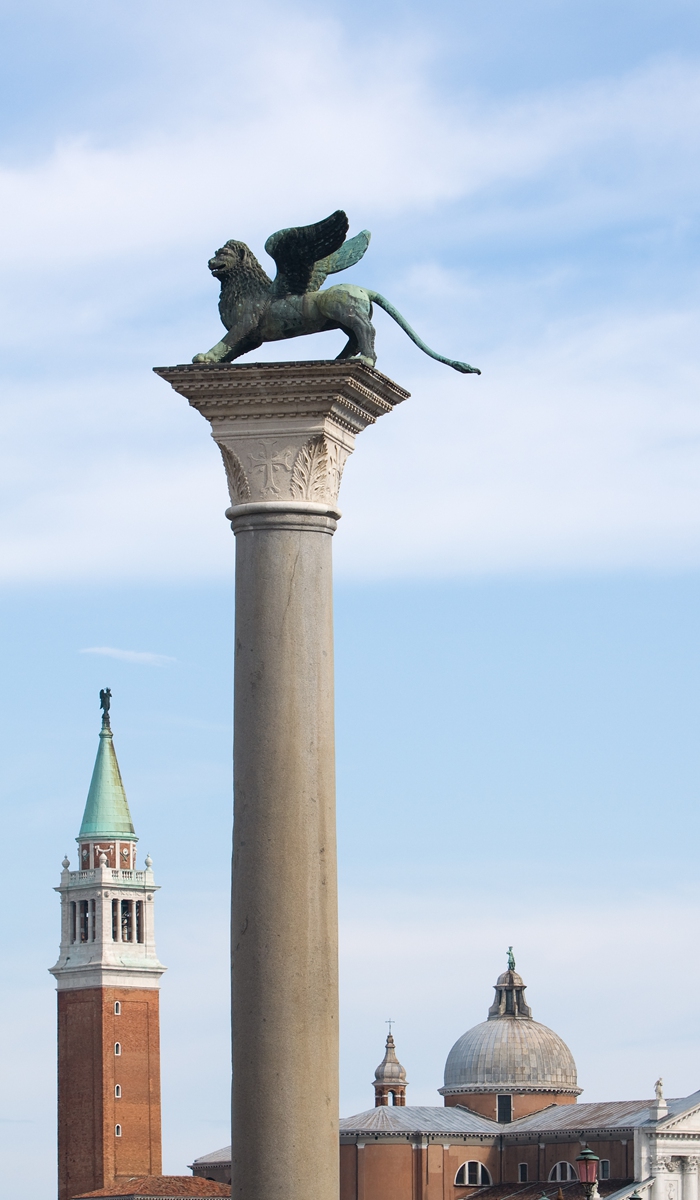
The Lion of St. Mark standing on a column in St. Mark's Square in Venice, Italy Photo: VCG
A stunning finding has revealed that the revered Lion of St. Mark in Venice, Italy, is linked to the artistry of ancient China's Tang Dynasty (618-907). This discovery unveiled during a recent conference on Marco Polo opens a new chapter in understanding the statue's enigmatic past.The Lion of St. Mark has been a symbol of Venice, standing majestically at Piazza San Marco (or St. Mark's Square, the main square of Venice). Tourists from around the world flock to admire its grandeur.
Traditionally, the statue's origins have been shrouded in mystery, with theories ranging from Hellenistic to Indian influences. Yet, recent research has significantly shifted this narrative.
Study revelation
In the latest finding, both the Lion's material and features have pointed to China.
A multidisciplinary study released results indicating that the statue is most likely an altered Chinese tomb gardian known as zhenmushou cast in the Tang period from China with copper from the mines in the lower Yangtze River basin. This has been confirmed by the accurate analyses of the lead isotopes, which leave in the bronze unmistakable traces of the original mines from which the copper was extracted.
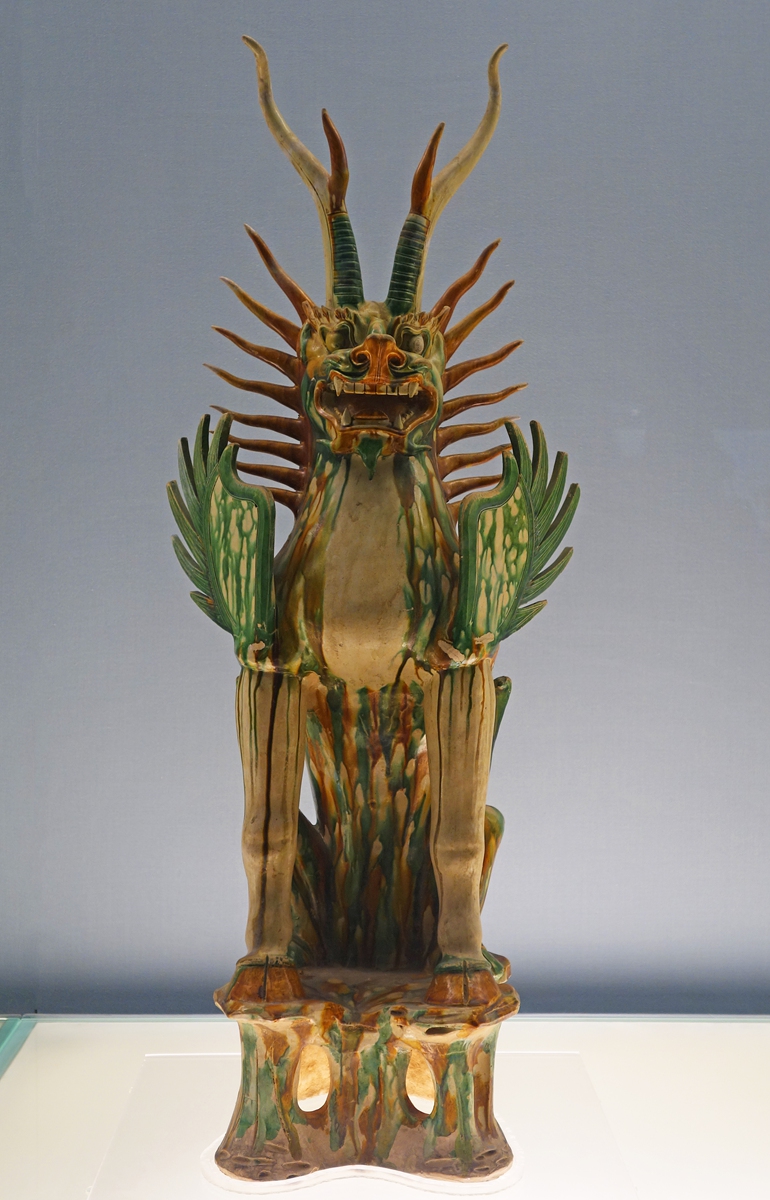
A pottery tomb guardian from the Tang Dynasty (618-907) at the Shanghai Museum Photo: IC
In mid-September, the study's findings were released at a workshop at the opening of the international conference on Marco Polo, hosted by Ca' Foscari University of Venice in Venice as part of the commemoration of the 700th anniversary of the death of the Venetian merchant traveler.Led by archaeological Professor Massimo Vidale, the research was mainly carried out by a group at the University of Padova. The stylistic analysis was carried out by Professor Massimo Vidale and Dr Roberto Ciarla of the International Association for Mediterranean and Oriental Studies (ISMEO), who is a sinologist and specialist in Eastern Cultures. Professor Gilberto Artioli, a geologist and mineralogist, collaborated on the lead isotope measurements and interpretation. Ivana Angelini, a chemist, collaborated in the chemical analyses.
Vidale told the Global Times, "For the moment, we can say with some certainty that the copper came from China, and that the style of the original parts of the statue matches Chinese formal traits."
The scientific method of isotope analysis has been widely used in the humanities and has made many new discoveries.
In a jointly produced movie documentary on this study, Professor Artioli confirmed that from an objective point of view, the evidence of isotopic patterns that have been found is evidence tracing back to ancient China.
"The [isotopic] signal is quite clear, we have no other comparisons," said Professor Artioli.
Serving as fingerprints for deposits, isotopes provide reliable interpretations when a complete database exists. Incomplete data may lead to ambiguity. However, consistent signals from Chinese deposits indicate a high certainty rate of approximately 95-98 percent. This method is similar to evaluating the odds of similar DNA, Artioli explained.
However, when dealing with stylistic considerations, the evidence is sometimes blurry.
Vidale shared that the "lion" in St Mark's Square has, for more than a century, been an archaeological riddle, and a link with China has been proposed more than once - but perhaps with little authority, given the absolute isolation of the specific case and the lack of very precise comparisons.
"To me and my co-authors, the similarities with a Tang zhenmushou, are evident; but we have to consider the important transformations that the original Tang sculpture underwent - the most important and earliest, if we are right, from a sitting hybrid horned and winged creature to the horizontal leonine image we see today," Vidale said.
Where could the lion's origins be? Scholars have debated this question for a long time.
There are various hypotheses, including that it might be part of an ancient statue depicting a chimera.
The unusual facial features of the Lion have sparked doubts and questions for at least 150 years. The features are unlike all European and Mediterranean lion representations since the late Antiquity to the Middle Ages, Artioli elaborated.
"Therefore, scholars have long debated the origin of the statue, confronting Early Etruscan, Anatolian, Assirian, Sassanian, Mesopotamian, and Chinese models. The most cited hypothesis is one proposed by Maria Bianca Scarfì in her 1990 book The Lion of Venice, which refers to a Hellenistic interpretation of an earlier Mesopotamian lion-headed griffin, possibly holding a statue," he explained.
Some of the facial features of the Lion correspond closely to the stylistic models found in the tomb-guardian monsters of the Tang period, especially the bulb-like nose and nostrils, the low forehead with deep wrinkles, the lateral positions of the ears, and the grinning mouth, Artioli told the Global Times.
The full details of the study will be published soon, said Artioli.
Enigma remains
There are still many questions yet to be answered even if the statue is indeed from China, like when the Lion was transported to Venice.
The circumstances of its arrival remain a mystery, with some speculating that the lion could have been brought to Venice by Marco Polo's father, Nicolo, and his uncle, Maffeo, who visited Beijing between 1264 and 1266. Others believe it may have arrived earlier, perhaps during a time of intense trade along the ancient Silk Road.
"There is no documentation on the arrival. We only know that the lion was already on the statue in 1293. The role of Marco Polo's relatives is just speculation. The earlier arrival in the Near East or in the Mediterranean during intense trade along the Silk Road is entirely possible," Artioli told the Global Times.
The Lion of St. Mark, once merely a local emblem, now stands as a testament to the rich tapestry of human history - a reminder that our past is intertwined across continents.
"The world was globalized much before and long after the 'Silk Road' trip of the great 'lion' [or its fragments]. As Italians and Venetians, we should be very proud when thinking that Venice and the northern end of the Adriatic Sea had such an important, meaningful link with the Chinese courts and traders of the times," said Vidale.
Professor Artioli expressed interest in collaborating with Chinese scholars to address remaining unanswered questions about this fascinating historical connection.
